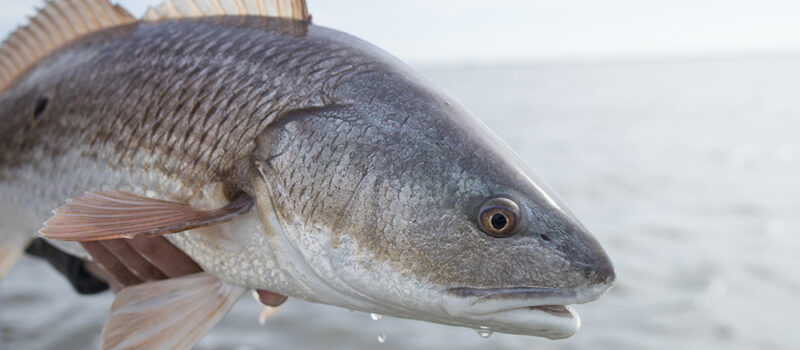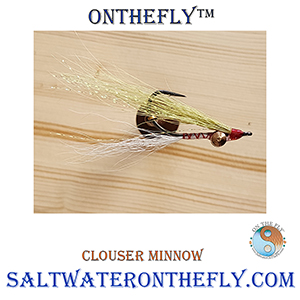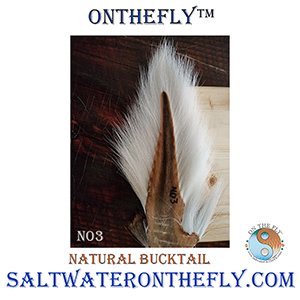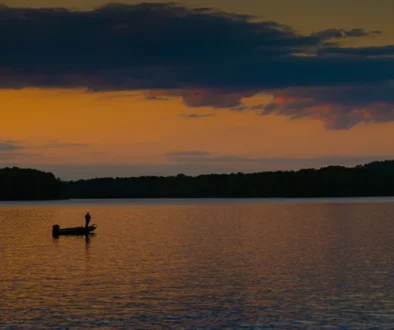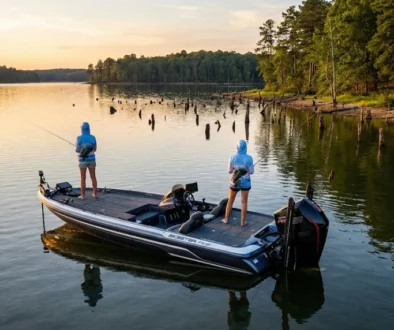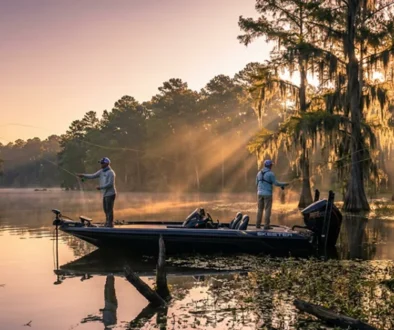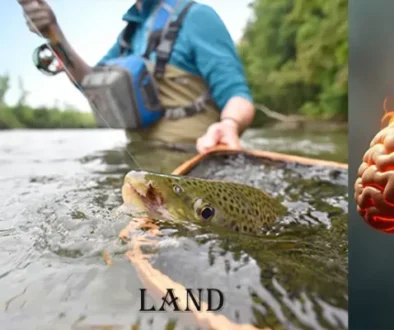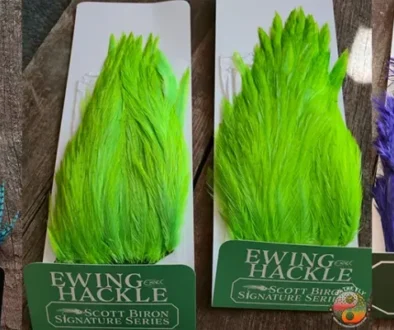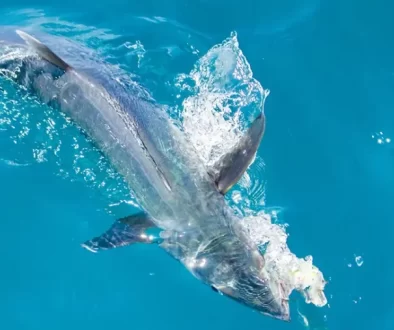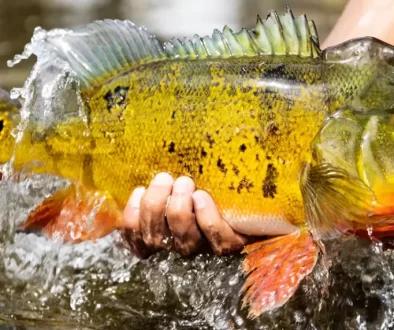Coastal Carolina Red Drum on the Fly is a Slice of Heaven
By Craig Lamb
Ever had that feeling of your line tightening, heart pounding, as a silver flash darts through the brackish waters? If you’re nodding in agreement or just wish to experience it, then this one’s for you. Coastal Carolina Red Drum on the Fly
We’ll be exploring fly fishing for red drum – those hard-fighting gamefish that call the Carolina coast home. A captivating pursuit combining patience and precision; an angler’s delight. A must Coastal Carolina Red Drum on the fly.
This journey isn’t just about catching fish though. It’s also about understanding them: their habits, habitats, life cycles and how factors like tides and shrimp activity affect them. After all, knowledge is power – especially when it comes to fly fishing for Carolina Redfish.
Feast your eyes on North Carolina’s Outer Banks, brimming with red drum schools. Head over to South Carolina and you’ll find spots where these stunning creatures really turn heads! And don’t worry, we’ve got the inside scoop on successful fly patterns that perfectly imitate their top meals.
Table Of Contents:
- The Majesty of Red Drum Fishing in the Carolinas
- The Life Cycle of Red Drum
- Red Drum in North Carolina
- South Carolina’s Red Drum Hotspots
- The Impact of Tides on Red Drum Behavior
- The Diet of Red Drum
- Shrimp Activity and Its Effect on Red Drum Fishing
- Effective Fly Patterns for Red Drum Fishing
- Comparing Red Drum Fishing in North Coastal Carolina
- FAQs in Relation to Fly Fishing for Redfish Along the Carolina Coast
- Conclusion
The Majesty of Red Drum Fishing in the Carolinas
Fly fishing for red drum along the Carolina coast is a matchless experience. You’re not just casting lines, you’re participating in an aquatic ballet, with each cast drawing you closer to nature’s heart.
These elusive creatures are as enigmatic as they come. They have unique habits and habitats that give anglers like us plenty to think about when we set out on our quest.
Intriguing fact number one: Did you know red drums can live up to 60 years? That’s older than most sitcoms. Or the start of a new one Coastal Carolina Red Drum on the Fly don’t strike out.
The Red Drum Migration Dance
A significant aspect of their allure comes from their migratory patterns. Much like snowbirds heading south for winter, these fishes move around based on seasons and water temperatures. It’s all very scientific and fascinating – or it would be if we weren’t so busy trying to catch them.
You see, understanding this migration dance can make a big difference in your fly fishing success rate because it lets you know where they’ll be at any given time during the year. The Texas Parks & Wildlife Department states that mature red drum often migrate between bays and nearshore waters.
Red Drum Habitats: The Homebody Fishes?
Interestingly enough, despite being excellent travelers (we bet they’d have loads of interesting postcards), young red drum prefer sticking close to home – well relatively speaking anyway. Their homes range from estuaries to shallow waters near the shore, according to NOAA Fisheries.
So there you have it. A snapshot of red drum fishing in the Carolinas – a rich tapestry woven from countless individual threads that together form an angling adventure like no other.
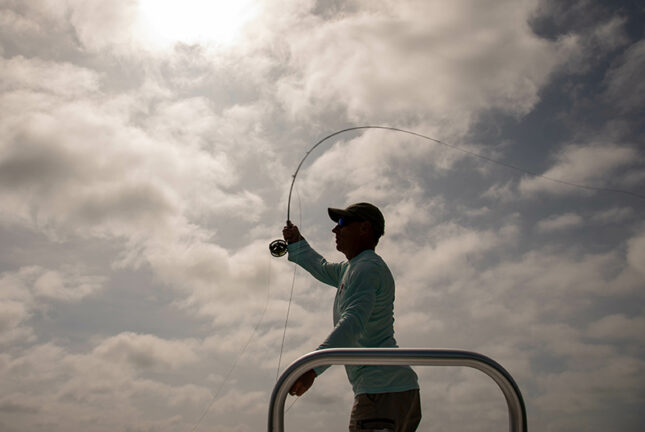
Red Drum are Fall Spawners Along the Carolina Coasts
Another spawning hot spot via the Oregon Inlet is the Neuse River, where the same cycle occurs with the juveniles remaining there a few years, then move offshore before returning each summer.
The same cycle occurs in the South Carolina Low Country, a particularly around expansive flats that wrap around Charleston, S.C., where most red drum are targeted in their formative years, before migrating offshore to spawn.
The water around Charleston is dingier, and thus sight fishing takes on a different approach. On lower tidal stages, the fish will be found pushing water on mud flats in large bays and oyster-filled basins, or on flats lining the edges of channels and the Intracoastal Waterway. Tiny feeder creeks fanning out into the marsh are pinch points for tidal flows and current that sweep bait past them. Reason the Coastal Carolina Red Drum on the Fly is so fun.
The Life Cycle of Red Drum
From tiny larvae to powerful adult fish, the life cycle of red drum is a fascinating journey that unfolds along the beautiful Carolina coast.
Spawning Habits of Red Drum
In late summer and early fall, mature red drum set off for their spawning grounds in nearshore waters. Males call out with a distinctive “drumming” sound, hoping to attract females ready to release their eggs. In just one night, a female can produce up to two million eggs.
This annual love dance takes place at dusk or dawn when tides are high. The National Oceanic and Atmospheric Administration confirms this behavior is key for egg survival as it helps disperse them into estuaries carried by strong currents.
Juvenile Red Drum Habitats
The surviving eggs hatch after about 24 hours becoming larval red drum that feed on zooplankton while they grow and develop into juveniles. They then migrate towards brackish waters where marshes provide abundant food and cover from predators.
According to an article published by ScienceDirect, these crucial habitats shape the young fish’s growth rate which impacts its survival chances during winter months.
Migration Patterns of Mature Red Drum
Matured around age four or five years old (some even hit puberty as teenagers.), these seasoned survivors leave behind their youthful haunts and move out to deeper waters. The journey can take them up and down the coast, following temperature gradients that are optimal for their survival.
As reported by PLOS ONE, these migratory paths form part of a complex life cycle which makes red drum an exciting species for fly fishers eager to understand and engage with nature’s rhythm.
Red Drum in North Carolina
The red drum, or Sciaenops ocellatus, is a species that has made quite a splash along the Carolina coast. This robust game fish offers an exciting challenge for fly anglers, especially off the Outer Banks of North Carolina.
North Carolina’s Pamlico Sound, one of the largest estuarine systems in America, becomes a playground for massive schools of mature red drum during summer months. Their migration patterns lead them here to feast on shrimp and small fishes. NC Wildlife Resources Commission.
Fishing Red Drum: Adds Adrenaline to Ones Life
The thrill begins when you spot their bronze-colored backs glistening under sunlight as they move shallow waters hunting for prey.
A good time to catch these elusive creatures is at dawn or dusk when they’re most active. NCDENR Fact Sheet. Remember though; fishing isn’t just about landing your quarry but also appreciating nature’s spectacle unfolding before your eyes.
Fly Fishing Tactics: Get Hooked On The Action.
While there are numerous ways to snag a red drum, nothing compares with fly fishing. It requires skill and finesse but once mastered – it promises unending thrills.
Consider using a 7 to 9 weight rod and reel with fast action for the perfect balance of strength and sensitivity. Saltwater Fly Tyers. Also, matching your fly pattern to their natural prey will give you an edge.
So get out there and soak in the thrill of red drum fishing in North Carolina. It’s not just about bagging that trophy catch, it’s also a chance to relish the rush of adrenaline this sport brings.
South Carolina’s Red Drum Hotspots
The Carolina coast is a playground for red drum enthusiasts, but South Carolina steals the spotlight with its prime locations. You can almost hear them call out to you as your fly line dances on the water surface.
Red drums, also known as channel bass or redfish, thrive in brackish waters where freshwater meets saltwater. The estuaries of South Carolina offer such an environment that these fish find irresistible.
Folly Beach: Redfish and Tourist a Hotspot
If there’s one place that never disappoints when it comes to reeling in some big ones, it’s Folly Beach. A favorite among locals and tourists alike, this spot sees more than its fair share of hefty red drum catches every season.
You might think we’re playing favorites here – well, you’d be right. We’ve spent countless sunrises and sunsets casting lines at Folly Beach; each time rewarded by the tug of a mighty catch at our reel ends. Our personal best? An impressive 50-pounder.
Murrells Inlet: Teeming With Red Drum
Another hotspot worth mentioning is Murrells Inlet – affectionately known as ‘the seafood capital’. But forget about what’s served on plates for now; let’s talk about what lies beneath those pristine waters instead.
A vibrant ecosystem awaits below those waves – home to shrimp schools which attract hordes of hungry red drums eager for their next meal. This gives anglers like us an excellent opportunity to present our carefully tied shrimp imitations to unsuspecting targets.
The evidence of our success is clear. We’ve landed quite a few ‘bull reds’ here, some even reaching up to 40 inches.
Impact of Tides on Red Drum Behavior
When you’re fly fishing for red drum along the Carolina coast, one thing’s for sure: tides can make or break your game. Why? Because they greatly impact where and when you’ll find these elusive fish.
Strong incoming tides bring with them a buffet of crustaceans and baitfish from deeper waters into the shallow flats. Hungry red drum are not ones to pass up a free meal – they follow this smorgasbord inshore, providing prime opportunities for anglers. NC Angler, explains it well.
This doesn’t mean that outgoing tides are any less important though. They expose oyster beds and sandbars which act as dinner bells ringing out to nearby reds.
Finding Reds During Different Tide Phases
To successfully chase down these crafty predators during various tide phases, knowing their habits is key. For instance, at high tide look near mangroves or grassy areas where crabs and shrimp hide. Captain Nat Langston suggests using larger flies here due to better visibility conditions.
During low tide however, focus more on mudflats since food resources get concentrated there as water recedes – think of it like an all-you-can-eat buffet but just within arm’s reach.
Tidal Knowledge Is Power Coastal Carolina Red Drum on the Fly
If there’s one takeaway from this tidbit of tidal wisdom, it’s that the more you understand how tides influence red drum behavior, the better your chances are of reeling in a big one. It’s like knowing exactly when and where the supermarket puts out fresh donuts – once you know, there’s no going back.
So remember: next time you head to Carolina coast with rod in hand, check those tide charts first. Your catch rate might just surprise you.
When fly fishing for red drum along the Carolina coast, understanding how tides impact their behavior can make your adventure more fruitful. Incoming tides bring a feast of crustaceans and baitfish, attracting these fish to shallow flats. Outgoing tides expose oyster beds and sandbars – an irresistible dinner bell for reds. When it’s high tide? Well, that’s when you should start scanning near mangroves because they tend to congregate there.
Diet of Red Drum
Understanding what a red drum eats is like having the cheat codes to your favorite video game. Let’s get an advantage by finding out what these shoreline creatures like to munch on. So let’s dive into the dining preferences of these coastal critters.
A study by Kenneth W. Able and Michael P. Fahay showed that young red drum feed primarily on small crabs and shrimp – it seems they have a thing for seafood cocktails. But as they grow larger, their menu expands too.
Mature red drum don’t shy away from variety in their diet. These voracious eaters are known to feast on anything from mullet fish to pinfish or even menhaden if given the opportunity. The term ‘opportunistic feeder’ fits them well because when hunger strikes, they aren’t picky about where their next meal comes from.
Bait Selection: Mimicking Natural Prey
To reel in a big one, consider flies that mimic natural prey items such as shrimps or smaller fishes. One might say this approach takes inspiration directly from nature’s playbook – how very Zen.
If you’re after younger drums, something resembling crabs or shrimp should be your go-to choice for bait (Crafty Shrimp Fly, anyone?). For those aiming at mature beasts with diverse palates though, try switching up between different bait types – remember diversity is key here.
Taking Advantage of Seasonal Preferences
We’ve talked about regular dietary habits but hold onto your hats folks because there’s more. Like us humans enjoying seasonal delights (hello pumpkin spice lattes.), red drum also exhibit certain seasonal preferences. In winter, for example, they have been observed to consume more Atlantic croakers. So don’t forget to adjust your bait selection according to the season.
Armed with this knowledge, you’re all set to make some waves in the world of red drum fishing.
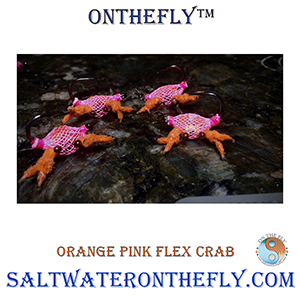
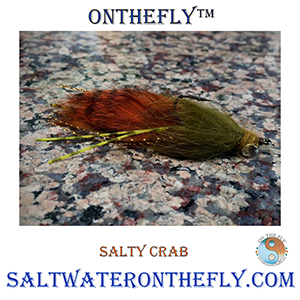
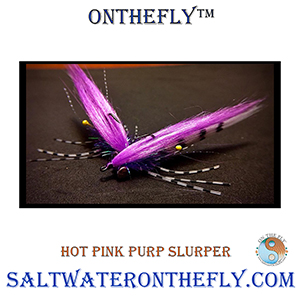
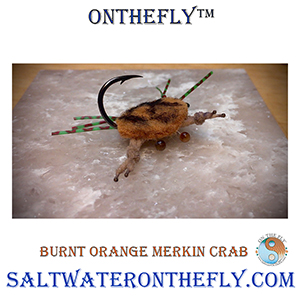
Shrimp Activity and Its Effect on Red Drum Fishing
If you’re out fly fishing for red drum, it’s essential to know your enemy. In this case, the ‘enemy’ isn’t the fish but what they eat: shrimp. You see, red drum, or redfish as they’re also known, have a particular fondness for these crustaceans.
Intriguing stuff happening here. The activity of shrimp directly influences where and when red drums feed. So let’s say that a horde of shrimp decides to party in shallow waters during high tide; chances are pretty good that our friends (the hungry red drums) will join them there too.
The connection between shrimps and tides? It’s simple – just like us humans navigating city traffic during rush hour, shrimps use tidal currents to travel with ease. This natural Uber ride allows them to conserve energy while moving towards their feeding grounds.
The Best Times To Fish For Reds During Shrimp Activity
To make the most of your angling adventure amidst active shrimp action, you need some strategy. Early morning or late evening hours usually coincide with both higher tides and more significant nocturnal shrimp movement.
This combo creates an all-you-can-eat buffet scenario attracting ravenous reds eager for a snack—a win-win situation if I’ve ever seen one.
Tips For Capitalizing On Active Shrimp Periods
Want some insider tips? Well here we go:
- Pick flies mimicking local Caridean shrimp species. Remember, the more your fly resembles the real deal, the better.
- Pay attention to tide charts and lunar phases. Shrimp are more active during stronger tides which typically occur around full or new moons.
- Fishing in low light conditions can increase your chances of hooking a red drum because that’s when shrimps get busy.
Wrapping it up, get to know how shrimp behave. Use this knowledge to your benefit and see the beauty unfold.
Effective Fly Patterns for Red Drum Fishing
Crafting the perfect fly is a delicate art, and when it comes to red drum fishing, there are some tried-and-true patterns that have proven successful. Let’s delve into these effective designs.
Crafty Shrimp and Kung Fu Crab
The Crafty Shrimp mimics the movement of live shrimp with its intricate design popular among seasoned anglers. The subtle movements entice red drums effortlessly because they can’t resist a tasty shrimp.
Moving on to the Kung Fu Crab. This pattern offers an uncanny resemblance to small crabs, another favorite snack of our scaly friends. The lifelike imitation is hard for any red drum lurking nearby to ignore.
Dupre Spoon Fly, Kinky Muddler, and Clouser Minnow
The Dupre Spoon Fly uses reflective materials in its construction that mirror baitfish swimming through sunlit waters – pretty clever. It’s like having your own disco ball underwater attracting all the party-loving fish.
The next star on our list is the Kinky Muddler, not just for its amusing name but also due to its effectiveness at imitating both baitfish and crustaceans with equal aplomb.
Last but not least we have the Clouser Minnow – a versatile little guy designed by Bob Clouser himself back in the 80s. The beauty of this fly is its simplicity, and it does a fantastic job imitating small baitfish.
So there you have it – five effective fly patterns for red drum fishing. Each one has proven their worth on the water, mimicking various elements of the red drum’s diet to perfection. Coastal Carolina Red Drum on the Fly for a challenging experience.
Proven Patterns to Tie Up
Crafty Shrimp
Designed to imitate the brown shrimp that inhabit Spartina grass and other seagrass-filled estuaries, its larger realistic profile is ideal when shrimp are at their largest during summertime.
Kung Fu Crab
The Kung Fu Crab is a go-to in the Carolinas and especially during summer during the higher flood tides. It sinks fast, makes lots of movement, and has a weed guard for preventing hang-ups in the Spartina grass.
Dupre Spoon Fly
You get a lot in one package, with this pattern resembling a wounded baitfish, wobbling like a crab in the grass, and a weed guard to prevent snagging.
Kinky Muddler
A go-to pattern during summer as red drum are feeding on finger mullet, when that preferred forage fills up low tide flats.
Clouser Minnow
An excellent, always proven choice for bottom-feeding red drum, its heavy eyes allowing it to quickly reach the feeding zone. Selection of Fly Tying Materials Click Here.
Comparing Red Drum Fishing in North Coastal Carolina
If you’ve had the pleasure of chasing red drum on both ends of the Carolina coast, you’ll notice some intriguing differences. Not all reds are created equal, folks.
In North Carolina’s Pamlico Sound and Outer Banks, anglers can find monster-size red drum, often weighing over 40 pounds. These “bull reds”, as they’re affectionately called by locals, make for an adrenaline-pumping catch.
Now let’s head south to Charleston Harbor in South Carolina. Here we have smaller but more plentiful schools of juvenile redfish. These feisty fighters are typically under 27 inches – a bit more manageable if your arms aren’t up for wrestling with their northern cousins.
- The bigger fish might offer a greater challenge (and bragging rights), but there’s something special about hooking into dozens of spirited young ‘uns throughout your fishing day down south.
- Average Size: In NC it’s common to reel in larger specimens above 30 inches whereas SC is teeming with spry adolescents averaging around 20 inches.
- Habitat Preference: The vast marshes and shallow flats characteristic of South Carolina waters attract younger fish while older ones prefer deeper channels found up north.
Differences Don’t End at Sizes and Numbers
Northern bull drums display darker colors due to spending more time out in open water whereas southern juveniles sport vibrant spots being marsh dwellers – Mother Nature’s camo working its magic.
Fly Fishing Tips: North vs South
In the north, heavier gear is required to handle these bruisers. Think 9 or 10-weight rods with sturdy reels capable of holding plenty of backing.
arms. If you’re heading south, go for lighter tackle. A quick-acting 7 or 8-weight rod gives a better fight with those energetic young ones – and it’s kinder on your arms too.
Out Among the Spartina Grass Are You Dressed Properly?
Salty morning and evening breezes can have a bit of bite or chill to them. Cutting through the layers to the quick. Be prepared with a good base layer out to the outer layers. All of our outdoor apparel has been field test the heights of Mount Elbert at an elevation of 14,439 ft., to humid hot days on the flats. Outdoor apparel with your comfort in mind, as well as ours. I wear this apparel everywhere. Leggings that are as great on the trail or a cool night in a sleeping bag at a mountain lake. Sun protective graphic hoodies with a facemask built in for sun and wind protection. This garment is a great base layer or outer layer on those hot days. A proven performer in the mornings and evenings is our Quarter Zip Hydrophobic Graphic Hoodie. Water resistant for those damp cool mornings. Outdoor Apparel Displayed Below.




FAQs in Relation to Fly Fishing for Redfish Along the Carolina Coast
Where is the best place to fly fish for redfish?
The Carolina coast, particularly North Carolina’s Outer Banks and South Carolina’s prime hotspots, are great for catching red drum.
What is the best fly fishing lure for redfish?
Fly patterns like Crafty Shrimp, Kung Fu Crab, Dupre Spoon Fly, Kinky Muddler and Clouser Minnow work wonders with Red Drum.
What is the best fly rod action for redfish?
A medium-fast to fast action rod gives you power in windy conditions while offering control when casting at close range – perfect for Red Drum.
What color flies are best for redfish?
Darker colored flies that mimic natural prey colors often yield success. Think browns and blacks resembling shrimp or crab.
Conclusion of Coastal Carolina Red Drum on the Fly
What an adventure it’s been, exploring the world of fly fishing for Redfish along the Carolina coast! We’ve delved into their fascinating life cycle, from spawning habits to migratory patterns. Remember how tides and shrimp activity can affect these silver flashes of Coastal Carolina Red Drum on the Fly.
North or South Carolina? You now know where to cast your line. The Outer Banks or perhaps those prime hotspots in South Carolina.
The real game changer though? Those effective fly patterns that mimic red drum’s favorite prey – remember Crafty Shrimp and Kung Fu Crab?
You’re armed with knowledge now; you’re ready to experience the thrill of your line tightening as a red drum takes the bait!
